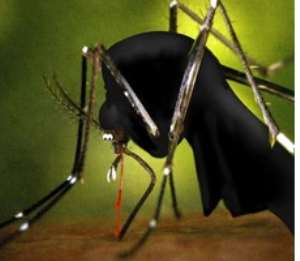
We all like reports of dramatic medical and scientific breakthroughs but the reality is that most developments are incremental. As a result, important issues can get overlooked.
Take malaria. Deaths from the parasitic infection have been falling steadily since around 2004. Only a few years ago it was said that the disease killed one child every 30 seconds. I remember using this figure on a trip to Ghana in 2006. By 2009 the estimate was down to one child dying every 45 seconds.
"It is now more likely that malaria kills a child every sixty seconds," according to Dr Richard Cibulskis, the lead author of the World Malaria Report.
He explained some statistical factors are at work here - in part the fall is due to a downward revision in overall global childhood mortality.
Many Africa countries do not have strong disease surveillance systems so cause of death data is not well recorded. This means that surveys and what are called 'verbal autopsies' - descriptions of symptoms given by parents - are sometimes used.
Progress
Despite difficulties in compiling the statistics, there is a clear, and welcome, downward trend in deaths. It is estimated that malaria killed 655,000 people in 2010, compared to 800,000 in 2004.
"It is remarkable progress," said Dr Cibulskis. "When I began working in the malaria field in Africa we were fighting a losing battle. Now all that has changed and the risk of dying from malaria has fallen by a third in a decade."
The improvement is down to several factors. A total of 145 million long-lasting insecticide-treated nets were delivered to sub-Saharan Africa last year, a huge increase on 2009. Spraying the walls of homes with insecticide is another effective means of reducing malaria.
Once infected, it is vital that treatment begins quickly. Rapid diagnostic tests are being increasingly used. These detect the presence of malaria parasites in the blood, often via a simple finger-prick test.
The use of artemisinin-based combination therapies has transformed the treatment of the disease in the past decade.
Children who are seriously ill can make a dramatic and rapid recovery after just a couple of days of taking the drug.
Drug-resistance
There continue to be worrying signs of drug resistance, first confirmed on the Cambodia-Thailand border in 2009 and now suspected in Burma and Vietnam.
To reduce the chances of drug resistance spreading it is vital that artemisinin-based treatments are giving in combination, and yet 25 countries - most in Africa - still allow the marketing of monotherapies. The WHO says most of the manufacturers are in India.
There are promising indications from trials of a vaccine against malaria, but this will be only part of the solution to tackling this preventable infection.
There are concerns about the global funding of malaria control which is expected to peak at $2bn this year and fall to $1.5bn in 2015. The UK government is notable among donors in that its support is pledged to increase in the coming years.
Malaria remains a major public health threat. Nine out of 10 deaths are in Africa and the vast majority are children under five.
Four countries - Armenia, the United Arab Emirates, Morocco and Turkmenistan - have been certified free of malaria since 2007. But around more than three billion people in around 100 countries remain at risk. The battle against malaria has a long way to go.




 Meta releases new version of conversational AI across its platforms
Meta releases new version of conversational AI across its platforms
 Cape Town named Africa’s Best Airport 2024 by Skytrax
Cape Town named Africa’s Best Airport 2024 by Skytrax
 Bono East: Four injured after hearse transporting corpse crashes into a truck
Bono East: Four injured after hearse transporting corpse crashes into a truck
 ‘Be courageous, find your voice to defend our democracy’ — Sam Jonah urges journ...
‘Be courageous, find your voice to defend our democracy’ — Sam Jonah urges journ...
 Exodus of doctors, nurses and teachers have worsened because of unserious Akufo-...
Exodus of doctors, nurses and teachers have worsened because of unserious Akufo-...
 2024 election: Avoid insults, cutting down people in search of power – National ...
2024 election: Avoid insults, cutting down people in search of power – National ...
 ‘You passed through the back door but congratulations’ — Atubiga on Prof Jane Na...
‘You passed through the back door but congratulations’ — Atubiga on Prof Jane Na...
 Government’s $21.1 billion added to the stock of public debt has been spent judi...
Government’s $21.1 billion added to the stock of public debt has been spent judi...
 Akufo-Addo will soon relocate Mahama’s Ridge Hospital to Kumasi for recommission...
Akufo-Addo will soon relocate Mahama’s Ridge Hospital to Kumasi for recommission...
 We must not compromise on our defence of national interest; this is the time to ...
We must not compromise on our defence of national interest; this is the time to ...
